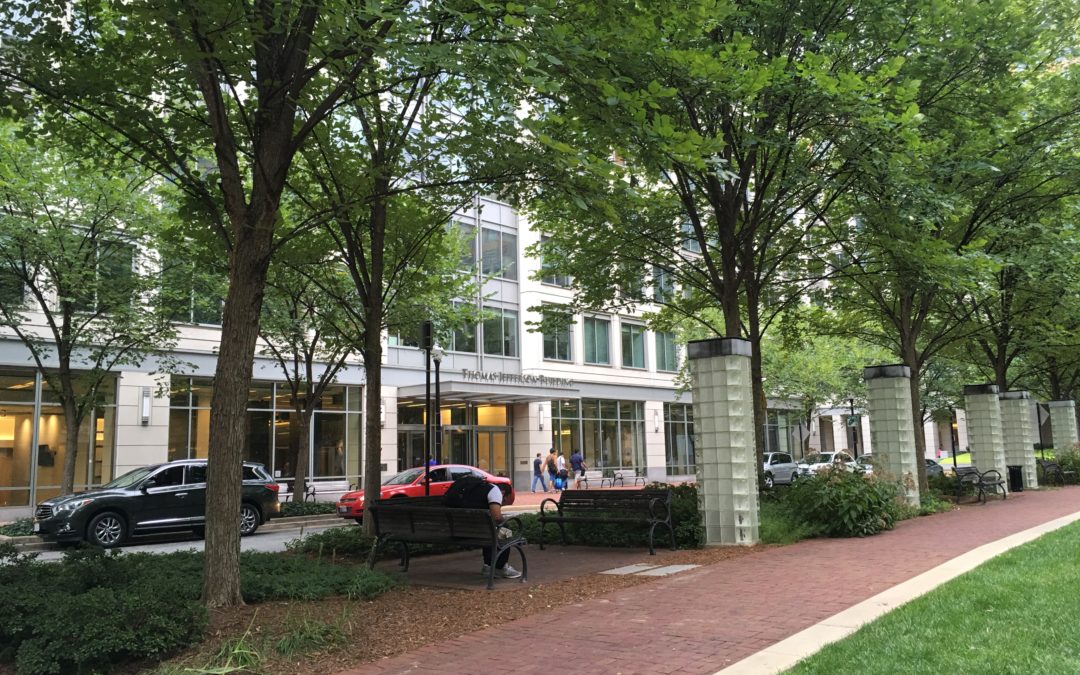Article and Photo By Doug Pearson
In a decision dated October 25, 2016, the PTAB denied institution of Google Inc.’s petition for Covered Business Method Patent Review (CBM) of claims 14-17 and 19 of U.S. Patent No. 6,771,970 (“the ‘970 patent”) owned by Locationet Systems Ltd. Google Inc. v. Locationet Systems Ltd., CBM2016-00062 (Paper 7)(PTAB Oct. 25, 2016). Specifically, the PTAB found that Google had failed to establish that the ‘970 patent was a covered business method patent because claim 4 had been disclaimed via a statutory disclaimer by Locationet subsequent to Google’s petition and prior to the Institution Decision, and because none of the remaining claims 14-17 and 19 relied upon for establishing CBM eligibility recited subject matter that met the requirements of a CBM patent.
The ‘970 patent is directed to a system for location tracking of mobile platforms including integration with map displays and other types of information associated with the location. The PTAB discussed claims 14 and 4. Claim 14 recites:
- A method of determining the location of mobile platforms, said mobile platforms between them being locatable by a plurality of remote tracking systems, each which is adapted to determine the location of a respective mobile platform according to a property that is predetermined for each mobile platform, the method comprising:
(a) accepting inputs from a subscriber identifying one or more mobile platforms to be located;
(b) determining for each mobile platform one of the remote tracking systems that is capable of locating said mobile platform;
(c) communicating the identity of the one or more mobile
platforms to be located to the determined remote tracking system(s);
(d) receiving the location of each mobile platform from the respective remote tracking system; and
(e) transmitting the location of each mobile platform to said subscriber.
Unchallenged claim 4 (depending from unchallenged claims 1, 2 and 3) recites:
-
A system according to claim 3, wherein said location information system obtains location information from selected ones of traffic information systems, electronic Yellow Page databases, video databases, L-commerce systems and free advertising systems.
Claim 4 was argued as conferring CBM status, especially for reciting “advertising,” but the PTAB found that claim 4 could not be relied upon to establish CBM eligibility because Locationet had filed a Statutory Disclaimer with the USPTO for claim 4 subsequent to the petition and prior to the Institution Decision, citing CoreLogic, Inc. v. Boundary Solutions, Inc., CBM2016-00016 (PTAB May 24, 2016), AT&T Mobility LLC v. Intellectual Ventures II LLC, CBM2015-00185 (PTAB May 4, 2016), Great West Casualty Co. v. Intellectual Ventures II LLC, CBM2015-00171 (PTAB Feb. 9, 2016), and Google Inc. v. SimpleAir, Inc., CBM2015-00019 (PTAB May 19, 2014). While the PTAB acknowledged that other non-binding PTAB decisions have held that a disclaimed dependent claim that recites finance-related subject matter may be considered in evaluating CBM eligibility (because the surviving independent claim is necessarily broad enough to cover the finance-related matter of the disclaimed dependent claim), the PTAB indicated that such rationale did not apply here because disclaimed claim 4 did not depend from any of the challenged claims 14-17 and 19 and because the Petitioner had not adequately explained any relevant relationship between claim 4 and other challenged claims.
The PTAB also found that the remaining claims relied upon to confer CBM eligibility (claims 14-17 and 19) had not been shown to satisfy the CBM requirements because claims 14-17 and 19 did not recite any limitations that required any financial information including advertising and because any such financial information (e.g., billing or advertising) described in the specification that might be supplied in some embodiments was optional. In this regard the PTAB stated:
It is not enough that a claim of general applicability, such as claims 14–17 and 19, may read on prior art systems that happen to include finance-related elements. Rather, finding CBM eligibility requires a “focus[ ] on the claim language at issue” to determine whether there is anything “explicitly or inherently financial in the construed claim language.” Blue Calypso, LLC v. Groupon, Inc., 815 F.3d 1331, 1340 (Fed. Cir. 2016).
The PTAB also noted that while claims 14-17 and 19 required a “subscriber,” the patent did not specifically describe money exchange, financial distribution or financial data exchange as a result of a subscription or being a subscriber.
The decision highlights how patent owners can use a statutory disclaimer to disclaim subject matter after a CBM petition has been filed to avoid having a patent deemed a CBM patent.
Doug Pearson
Latest posts by Doug Pearson (see all)
- PTAB FY 2019 Statistics Through May - July 18, 2019
- Click-to-Call Cert Petition – Second Extension of Time Granted - December 12, 2018
- BREAKING: Click-to-Call and One-Year Time Bar – Petition for Certiorari Incoming - November 15, 2018

